This article documents my investigation into how LEGO trains interact with curved tracks. Specifically, the relationship between bogie distance, bogie size, and the bogies' pivot radius.
"LDU" below refers to LDraw Units, where 1 LDU ≈ 0.4mm.
We start with bogies with three bogie sizes:
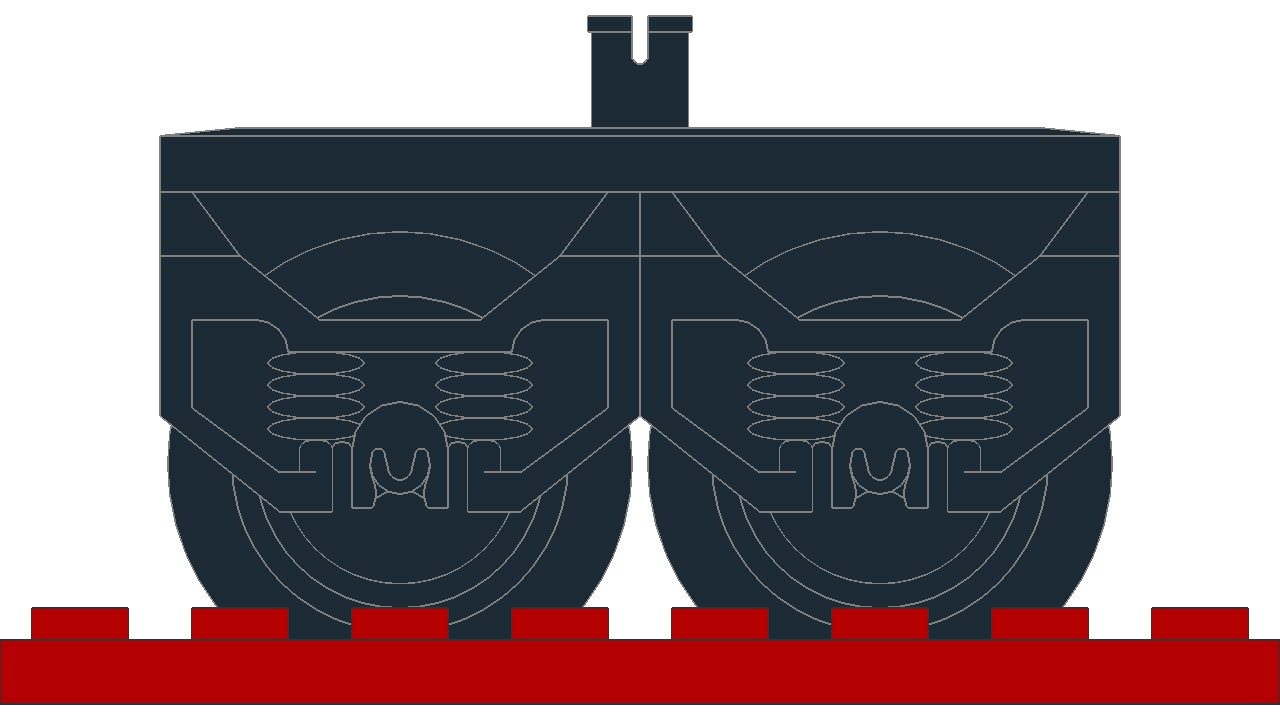
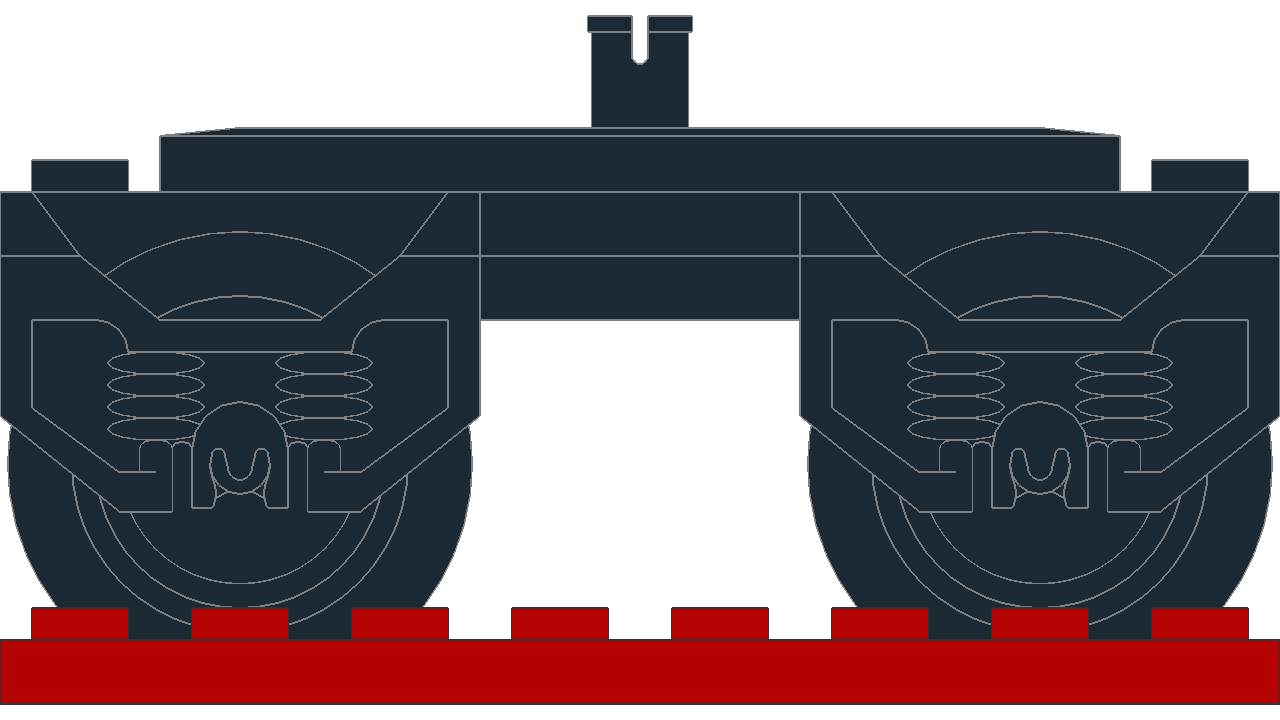
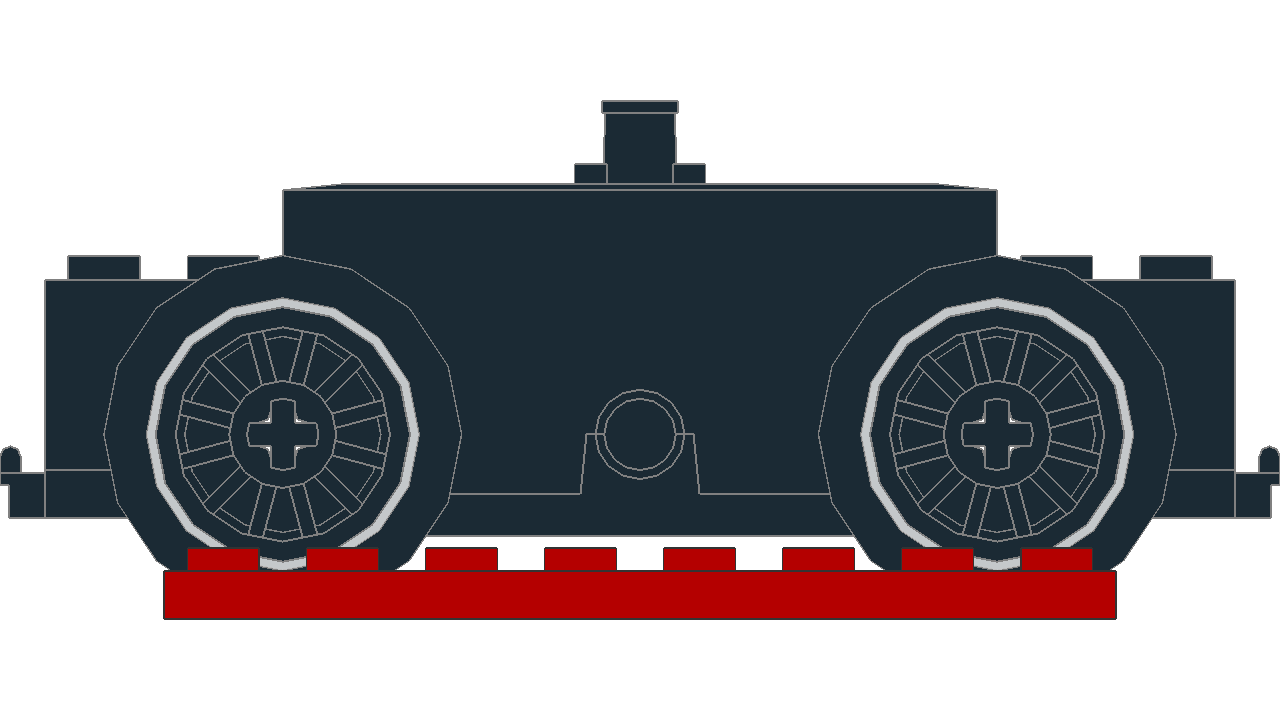
Just for reference. Only curved track is in scope for now. Curved tracks represent the tightest radius that a LEGO train would be expected to travel on.
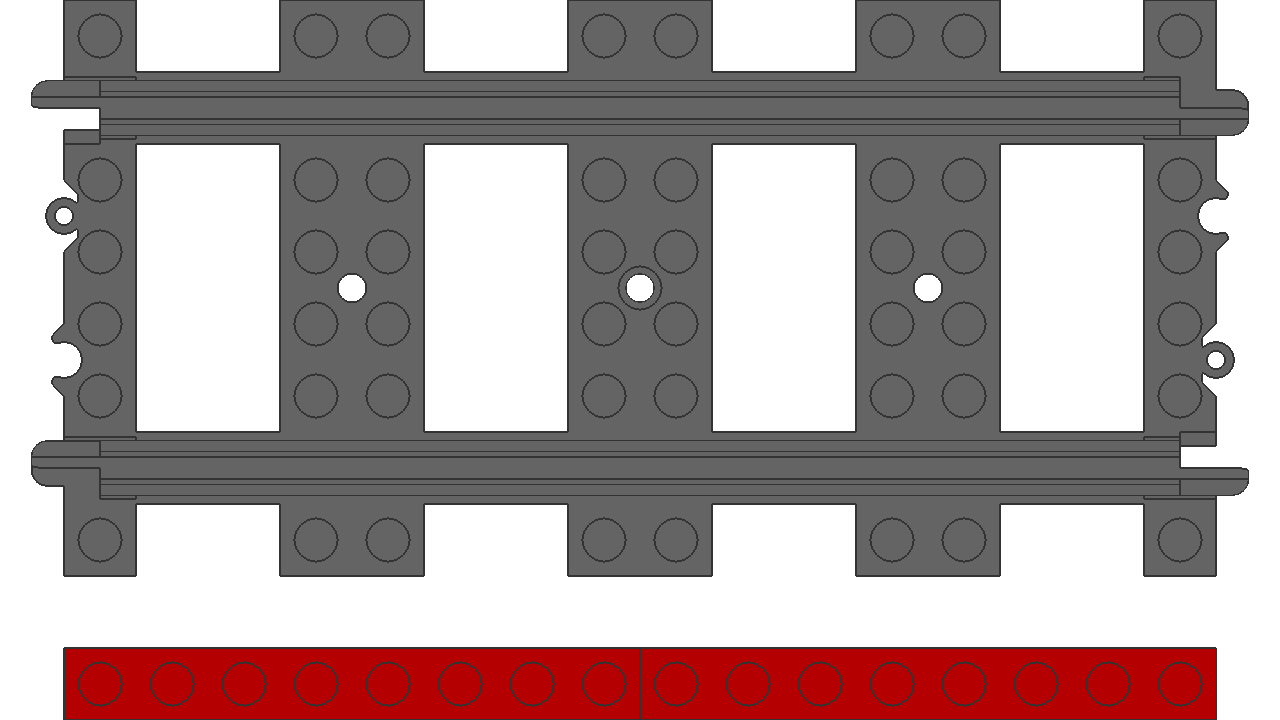
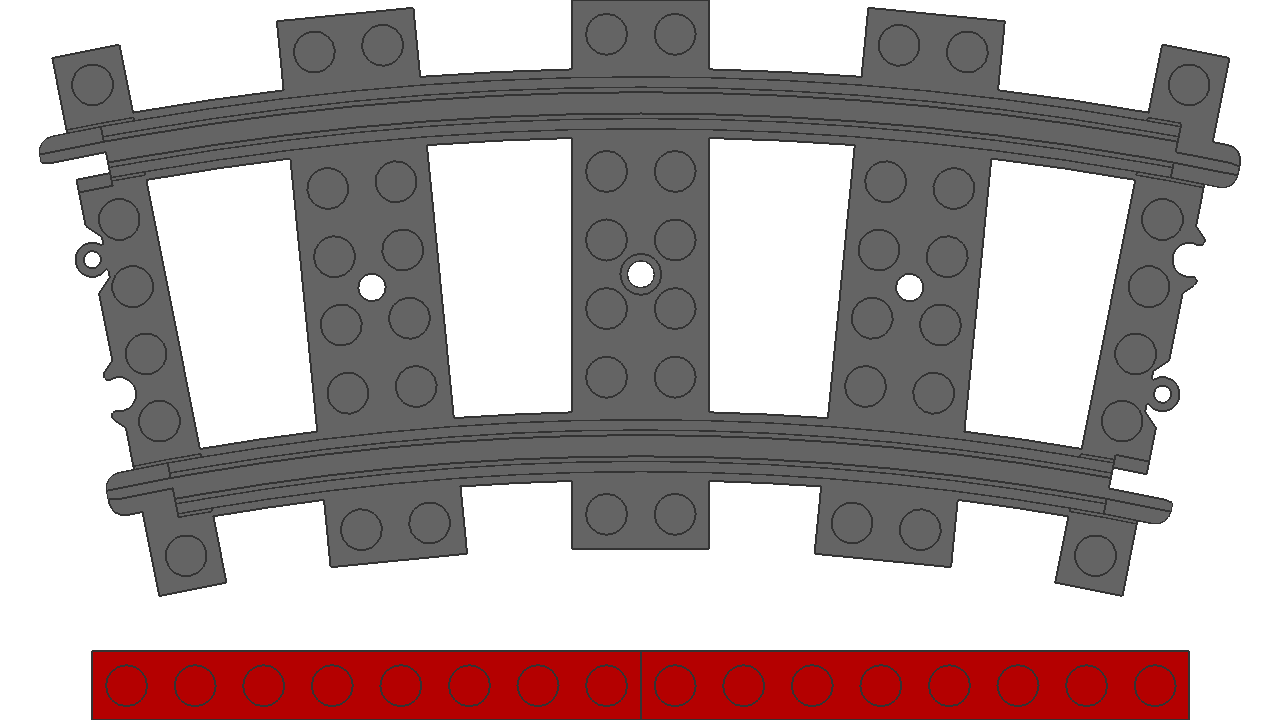
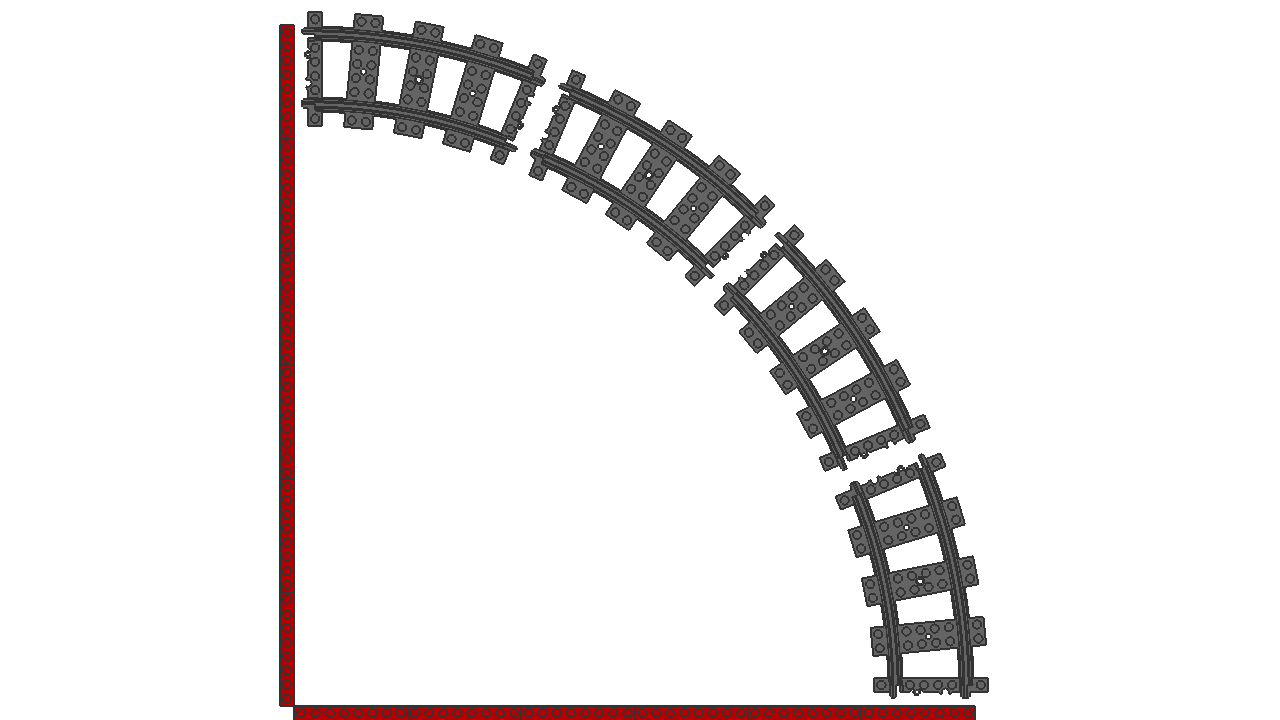
At the same distance, they all seem to have the same rotation from their origin. In this experiment, different sized bogies are positioned with their pivot point 400 LDU apart, fit onto the track while rotated 14.2° from their origin.
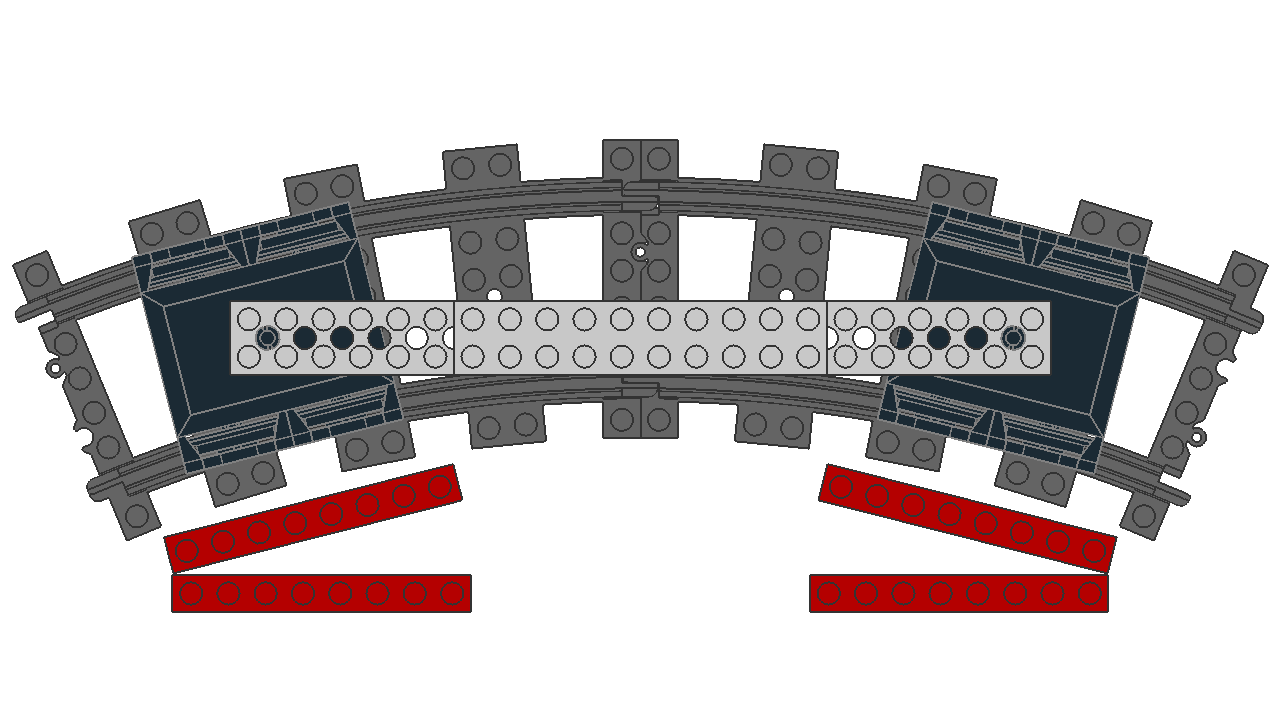
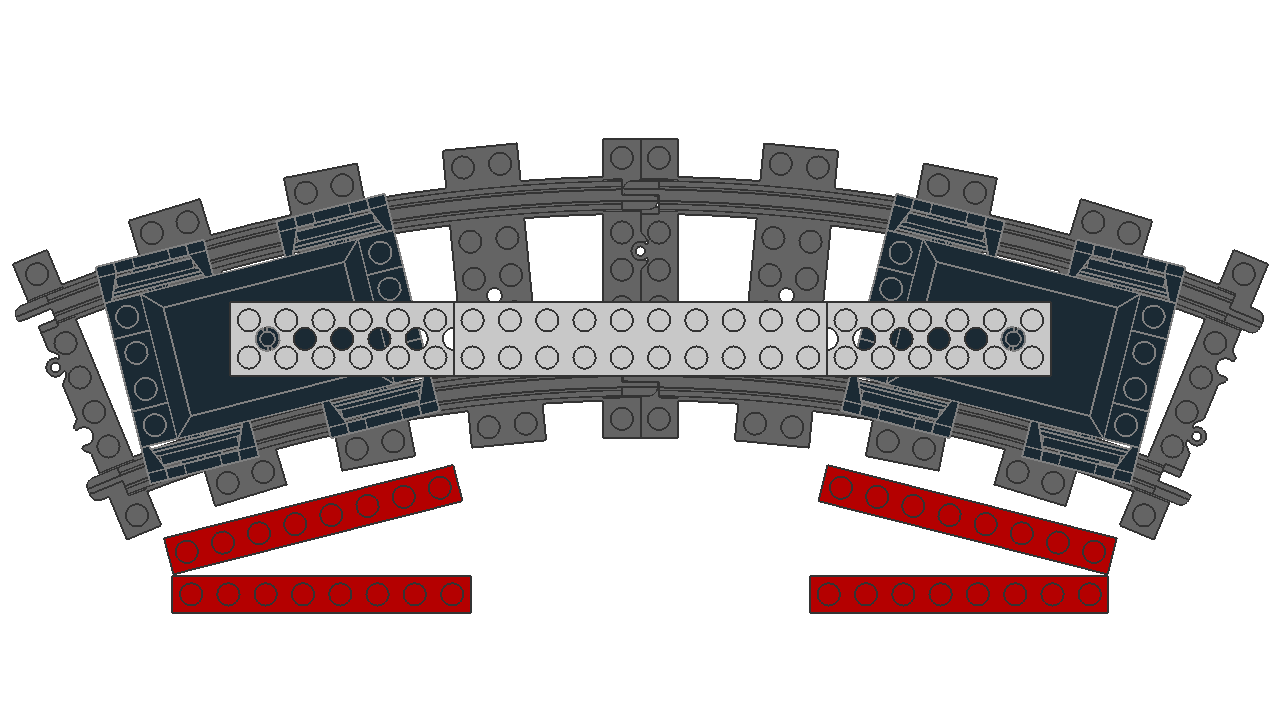
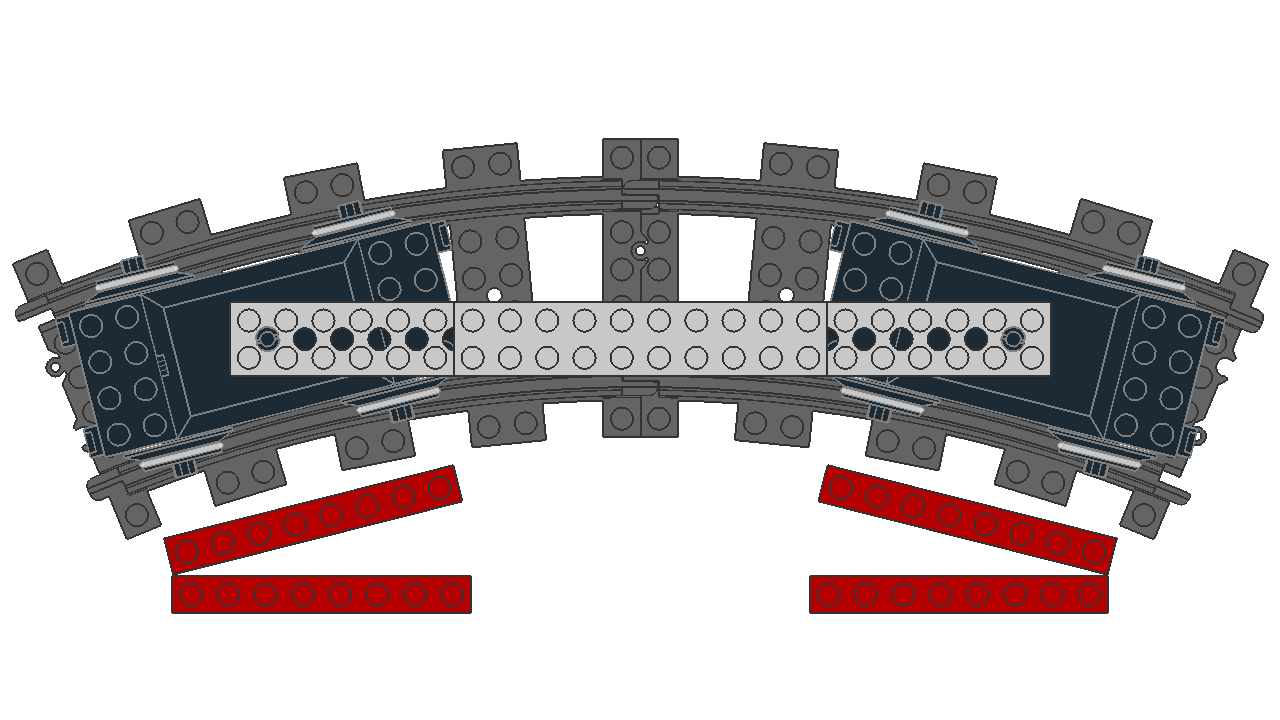
At different distances, they have different rotations from their origin. In this experiment, identical 60 LDU bogies are positioned with their pivot points at different distances, which affects the rotation from their origin.
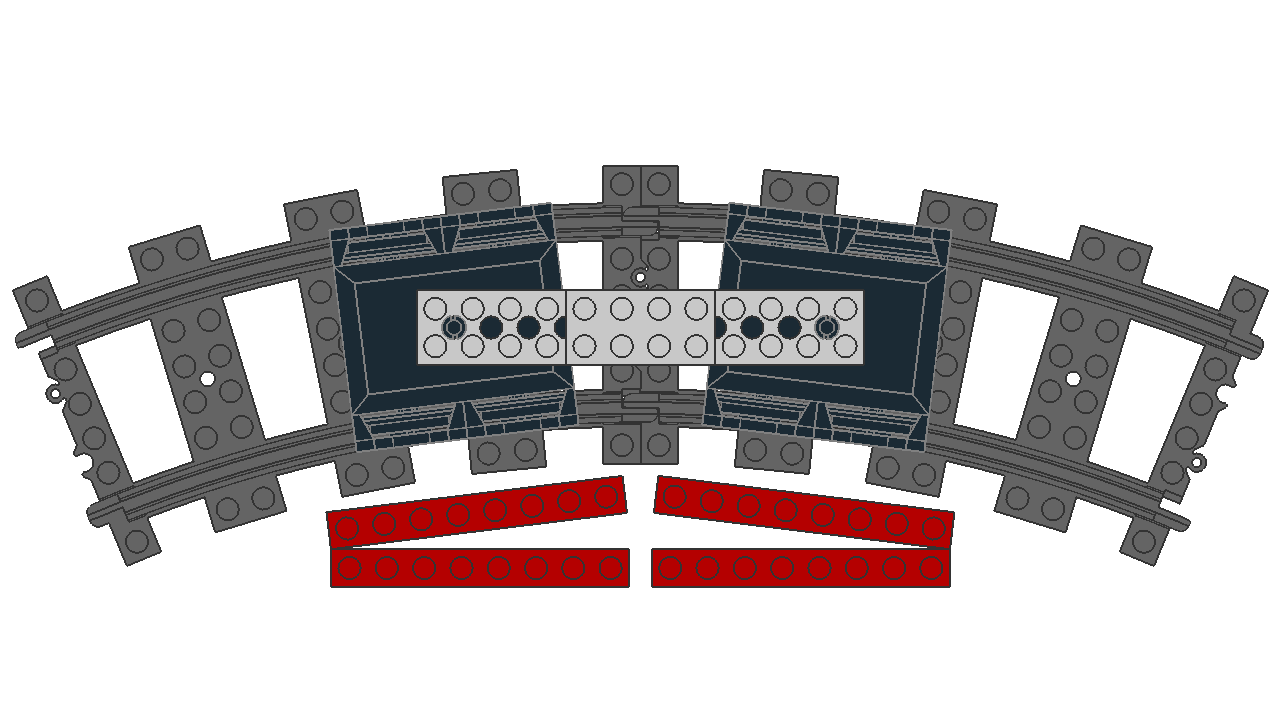

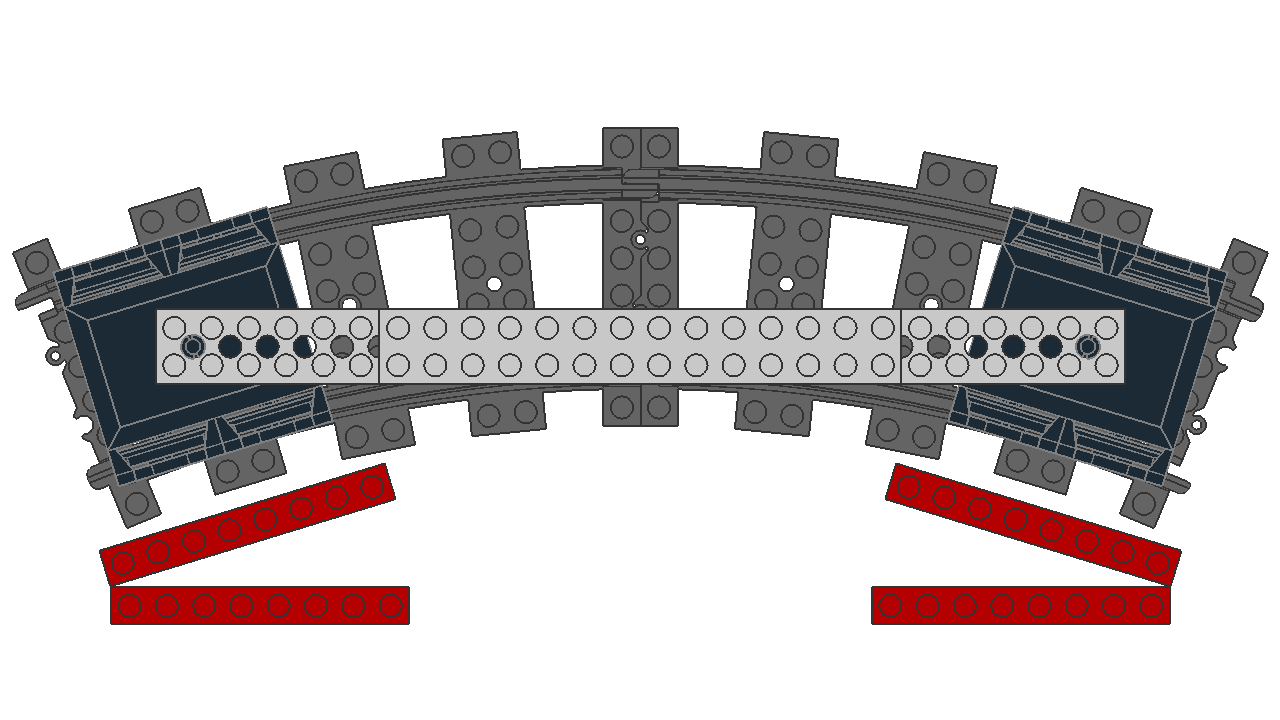
With these datapoints, we can approximate the relationship as
If you have any feedback or questions related to this article, please reply to my post on Mastodon. This article is part of the LEGO set.